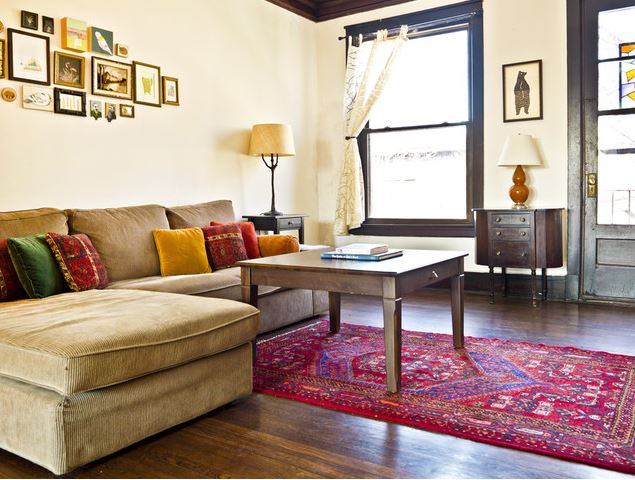Hamadan Rug
Hamadan is a city situated in the western part of Iran, 300 kilometres west of Teheran. It is one of the worlds oldest cities and is mentioned under the name of Ekbatana in the Bible, see the book of Esther. The city is a centre for trading with rugs that are manufactured in the hundreds from nearby villages and cities. The best of these rugs are sold under their own names such asNahavand, Tuiserkan, Malayer orHosseinabad. More simple rugs from the area are sold under the generic term Hamadan.
They are easily recognized with their typical patterns and sizes. The patterns are very varying and the medallion as well as rugs with repeated patterns occur. Among individual pattens the Herati is the most common pattern.
The colours are dominated by different nuances of indigo blue and madder red. Older Hamadan rugs can be very attractive products. In the city itself, Hamadan, rugs were manufactured with a considerably higher quality.The rugs were called Shahr-baff (Shahr=city, baff=knot) and are similiar in structure to the Bidjar rugs, but they are rare on the market today.
The rugs are manufactured with a roppy, shiny and often natural dyed handspun yarn, that provides a very durable surface and beautiful colour scale. Common for all these rugs is that they are nowadays made on a cotton warp with one weft. The patterns are mostly geometrical, but floral motifs also occur. Materials and design can be of very varying quality.
Older rugs (before 1920) are often tied on wool warp, different from todays cotton warp. The younger rugs (after 1960) often have synthetic colorus and less fine wool than older rugs. The most common sizes are dozar and zaronim (approximately 200×120 cm and 150×100 cm).
In general Hamadan can be said to be good utility rugs. Examples of Hamadan rugs are Burchalow, Enjilas, Hosseinabad, Lilihan, Khamse, Zanjan and Malayer rugs. The rugs are also sold under the name of Hamedan.
Hamadan rugs fit into my “Persian Rugs the O’Connell Guides” section as a catch-all description of rugs from a broad area centering on Hamadan but extending into the surrounding provinces. These rug are predominantly woven by weavers who speak Persian or Turki and who are Shia Moslems. At one point I thought that many of the weavers were Kurdish but the facts fail to support that idea. I do however feel that many of the weavers are the descendents of refuges who moved to the region after the loss of the Persian Caucasus in the 19th century.
- A major city in Iran That is west of Teheran and north of Malayer and south of theBijar Rug producing areas.
- Hamadan rugs typically have one heavy cotton shot of weft (single wefted) and are made with thick high quality wool.Coarsely woven but substantial rugs.
- There are a number of village and Kurdish Rugs that are sold as Hamadan rugs.
- According to Leslie Stroh of Rug News there are 1500 villages in the Hamadan area that each produced about 2 designs so that there were 3000 different types of Hamadan rugs at the height of OCM’s business in Hamadan.
Source:
http://www.rugencyclopedia.com/
http://www.catalinarug.com/
http://www.houzz.com/






